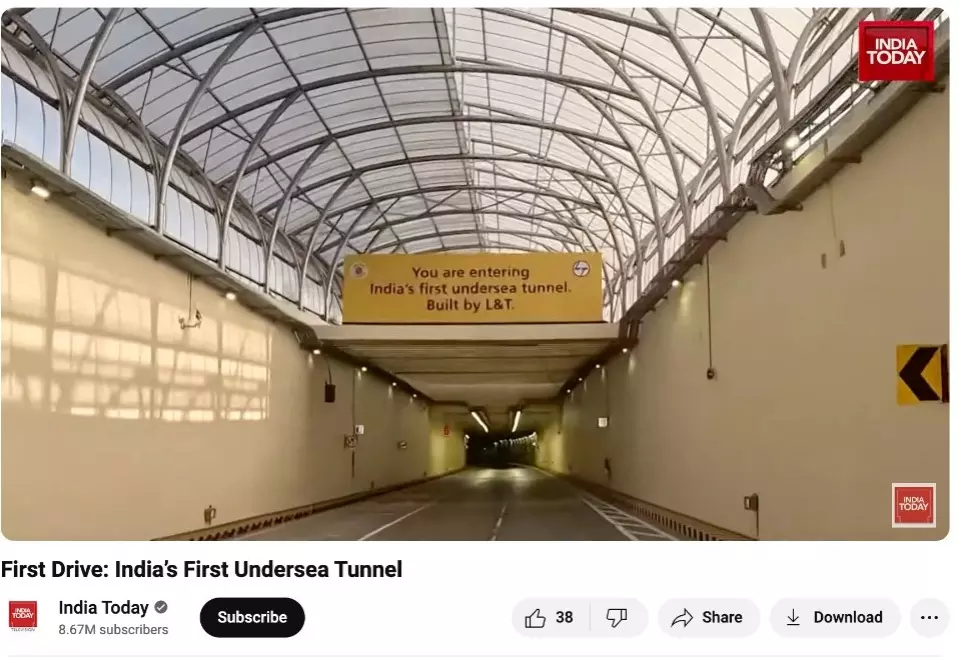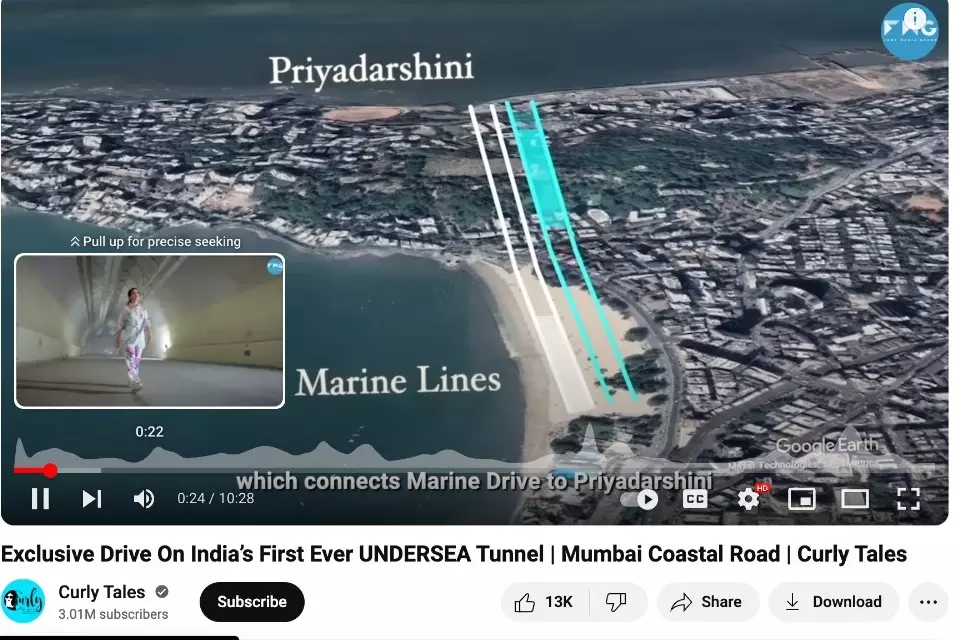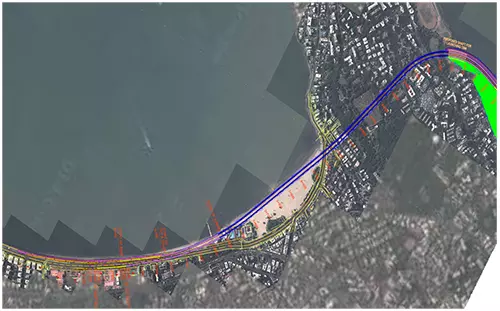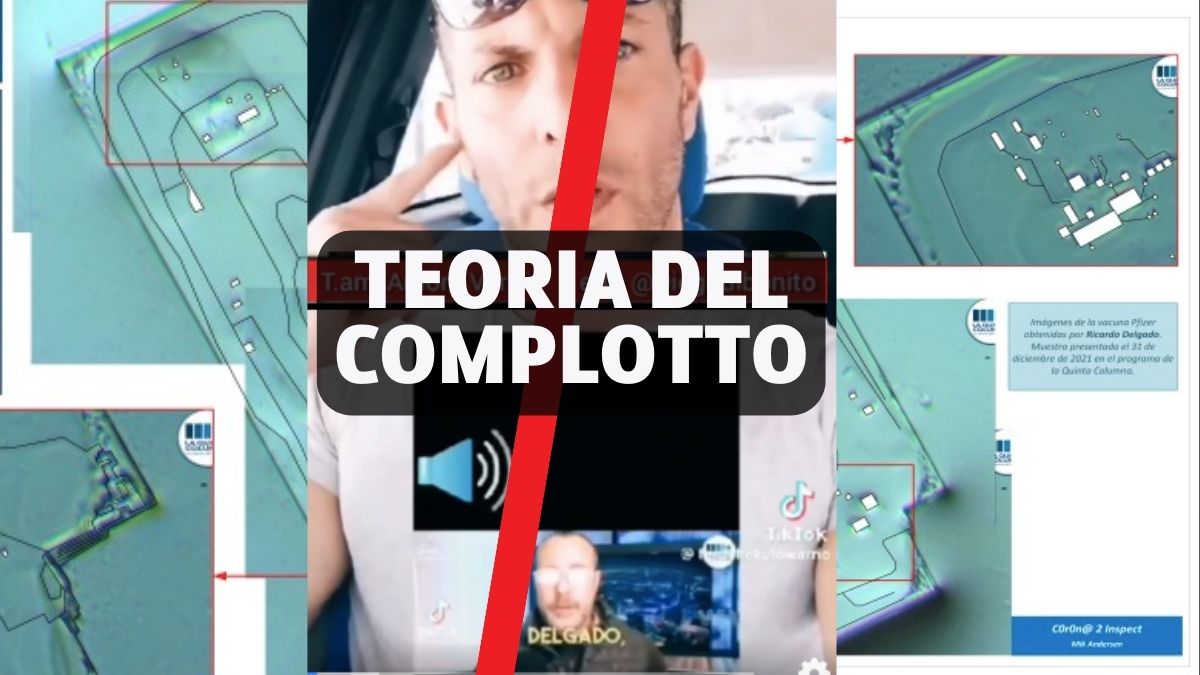Several news outlets have reported that "India's first undersea tunnel" has been constructed in Mumbai as a part of the Coastal Road Project. Social media users have also mistakenly referred to it as an underwater tunnel. However, this claim is misleading because the tunnel, labelled "India's first undersea tunnel built by L&T," does not technically pass directly under the sea. Instead, it passes along the Arabian Sea.
News outlets and channels such as Times of India, Indian Express, India Today, … and prominent vlogs like Curly Tales, among others, have all reported that a portion of the tunnel lies under the sea.
On X, the launch of the tunnel was shared by several individuals, including Simon Wong, the High Commissioner of Singapore, Anand Mahindra, Chairman of the Mahindra Group, and others. Numerous users on X have posted pictures and videos of the tunnel, referring to it as an underwater tunnel. Find archived links to the posts here, here and here.


The Mumbai Coastal Road Project - South, also known as the Dharmveer Swarajya Rakshak Chhatrapati Sambhaji Maharaj Coastal Road, intends to link Shamaldas Gandhi Marg (Princess Street Flyover, Marine Drive) in the south to the Worli end of the Bandra Worli Sea Link. This project, which aims to help decongest traffic along the west coast of Mumbai, includes various components such as the coastal road reclamation, tunnels, bridges/flyovers, elevated roads, interchanges, and sea wall/break wall constructions. The tunnel built by L&T along the Arabian sea is a part of this project.
Currently, 9.5 out of the 10.58 kilometers of the project - South, is open to traffic. The remaining section, including the north-bound lane, is scheduled to open in May this year.
Does a portion of the tunnel lie under the sea?
Technically, no.
According to the Brihanmumbai Municipal Corporation (BMC), "India’s largest 12.19 meter diameter tunnel is being constructed 20 meter below the shore of Arabian Sea.."
Of the 10.58 km project, L&T has constructed 2.07 km underground tunnels starting from Girgaon, running below the Malabar Hill, Hanging Gardens and the intertidal zone of the sea at Girgaon Chowpatty. Running along the coastline, the tunnels run at depths varying from 20 to 70 metres below the sea level, with the lowest point located under Malabar Hill.
While the entrance of the tunnel may claim to be an undersea tunnel, it does not cross the ocean nor is it constructed beneath the water.
"A tunnel below the sea level is not the same thing as undersea tunnel," Zoru Bhathena, an environmental activist in Mumbai told BOOM.
"Every four-storey basement in Mumbai is below sea level. An under sea tunnel means crossing under sea. Not a tunnel along sea. There is simply no under sea tunnel, only an under Malabar Hill tunnel, at best, an under chowpatty beach tunnel." said Bhathena.

The image above, sourced from the BMC's website, highlights the tunnel in blue, indicating its path along the shoreline and underneath the beach.
"Undersea" and "under sea level" are differently defined. "Undersea" refers to something situated or constructed beneath the water surface, whereas "under sea level" refers to a location or point that is situated at a depth below the average level of the sea's surface.
Undersea tunnels are relatively rare due to the complexities and challenges involved in their construction. For instance, a portion of the the Cross-Harbour Tunnel in Hong Kong is submerged beneath the sea. It passes beneath Victoria Harbour, linking Hong Kong Island with Kowloon Peninsula.

 1 month ago
20
1 month ago
20


